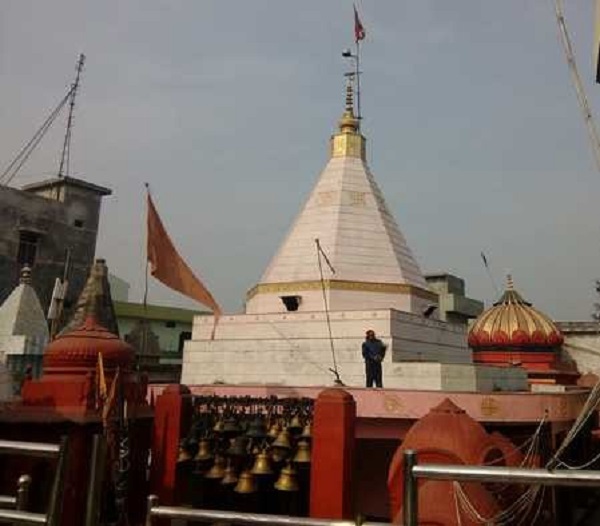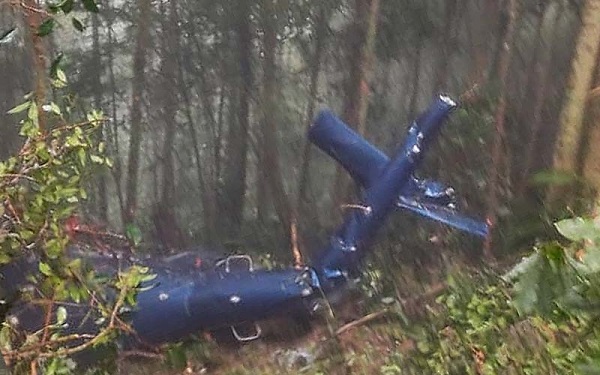SR Darapuri I.P.S.(Retd)
(Note : The Golagokarnath temple located in Kheri district of Uttar Pradesh is a famous Shaivite temple. It is also called Chhoti Kashi. But in the District Gazetteer of Kheri district published in 1905, its reference is given below, according to which this temple has Buddhist connection. The mention of this temple in the gazetteer is given below.)
(Ref: Kheri: A Gazetteer, Volume XLII of the, District Gazetteers of the United Provinces of Agra and Avadh by H.R.Nevill I.C.S., Allahabd, Printed by F. Luker, Supdt. Govt. Press, United Provinces. 1905)
Page 184-185-186
(Asian independent) Gola, Pargana Hyderabad, Tehsil Muhamdi.

A small but famous town in the north-east corner of the pargana, lying in latitude 28o6’ north and latitude 80o 28’ east, on the north side of the main road from Lakhimpur to Muhamdi, at a distance of 22 miles from the district headquarters. Branch roads lead north-west to Khutar in Shahjahanpur, north to Bhira, and north-east to Aliganj. Less than a mile to the east of the town is the railway station. The population in 1891 numbered 4,311 souls and at the last census had risen to 4,913, of whom 3,700 were Hindus, 1,133 Musalmans and 20 Christians and others. Gola is administered under the provisions of Act XX of 1856, which was applied in 1905, and contains a police station, dispensary, post office, cattle- pond, and a large upper primary school. Markets are held here twice a week, and the place is one of the principal trade centres of the district.
The town is picturesquely situated on some small hills, on the bank of the vanished river Ganga, whose course is marked by a ridge of sand stretching away to south. The bazar lies to the west, and here a busy trade is carried on in grain and sugar. To the east is the celebrated temple of Gokarannath, and its great tank, round which are clustered the many smaller temples, dharamshalas, and the monasteries of Gosains. Gola is one of the most sacred spots in Oudh, and here an immense assemblage, aggregation on an average some 150,000 persons congregate twice annually in Phagun and Chait for fifteen days on each occasion. Pilgrims and traders come hither from long distances, travelling by road and rail; many bring Ganges water to pour over the famous lingam of Mahadeo in the great temple. Their offerings are taken by the priests, but a cess of one anna in the rupee is levied by Government to defray the expenses of the fair management.
The place is of extreme antiquity, but little remains to interest the archaeologist. Originally Gola was doubtless a centre of Buddhist worship; traces of this religion are still seen in several bas-reliefs built into the temple walls, and in the neighbourhood terra-cotta images of pure Buddhist types have from time to time been found. Possibly, too, the Gosains and their monasteries are an evolution from Buddhist priesthood. The temple of Mahadeo is a shivala of the ordinary type, with this peculiarity that it stands below the level of the surrounding ground, the lingam standing in a kind of well about four feet deep. This temple is supposed to be the central spot of a large tract of sacred ground. There are four gates on the borders of this holy land, at an equal distance of twelve kos or eighteen miles from the centre. These are at Deokali in the east, Shahpur on the north, Mati in Shahjahanpur on the west and Barkhar on the south. At Deokali there is still a Surajkund, a tank built in honour of the sun, at which religious assemblies take place, and possibly, in days previous to Buddhism, Gola was a centre of sun worship. Through one of these gates all pilgrims are supposed to pass before approaching the shrine.
The tombs of Gosains are small structures with fluted cupolas, and are evidently taken from the pattern of Buddhist stupas. They are supposed to be celibates and are buried, as usual, in sitting postures. Most of the tombs stand close to the great tank, a masonary structure surrounded by flights of steps coming down to the water.
The ancient history of Gola is now merely a matter of tradition. According to the Gosains the image of Mahadeo came here by accident. When the giant Ravana was attempting to carry Mahadeo to Ceylone, the deity told him that he would only suffer his image to be removed on the condition that it should not touch the ground, as where it should be placed, there it would remain. Ravana accordingly set out and on arriving at Gola, was obliged to entrust his charge to an Ahir boy for a few minutes. The boy grew tired and placed the stone on the ground, where it remained, and Ravana on his return was unable to move it. The origin of the tank and the brick cylinder in the centre, whence the water-supply is maintained is said to be as follows: – A young Brahmin girl happened one day to kill a calf, and in horror at the deed ran off to hang herself, choosing by chance the tree that grew over the stone of Gola. By her actions she disturbed the deity, who bade her leave him in peace and go dig in a spot hard by. She went to the relations and told her story. They helped her to dig and, after making a deep excavation, found the calf buried alive. The hole became the source of the tank. The water-supply is very scanty and the tank has no outlet, so that the water becomes dull green colour and very impure. After one of the big festivals, it is absolutely filthy; respectable pilgrims indeed decline to bathe in it, and instead put a drop of water on their forehead, a ceremony called marjan, which is held to be equally efficacious.
The lingam is a round stone, probably a portion of a Buddhist pillar. It bears the mark of a heavy blow caused according to one account, by the thumb of Ravana, or else, a more probable account, by the mace of an iconoclast Musalman. The story goes that Aurangzeb attempted to pull up the stone with chains and elephants, but without avail, and that when the emperor approached the spot flames burst out of the ground, and the dismayed monarch consequent








